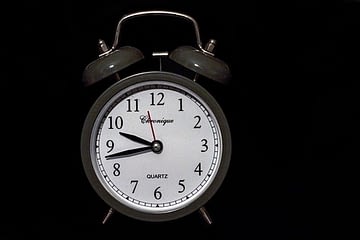According to the Center for Creative Leadership, just 18 percent of executives rate their organization’s executive team as being “very effective.”
That report card is so much worse than I imagined.
The CCL article on Effective Leadership in TrainingMag asserts,
“…individual leaders often struggle to balance the conflicts that can arise between their functional responsibilities and their enterprise, or big picture, leadership roles.”
What does it take to have an effective top team?
Putting smart individuals in a room doesn’t guarantee a great team. There are some predictors of how well a group of individuals coalesces — for better or for worse — into a team.
Predictors of performance determine whether a leadership team is effective, regardless of the experience, talent or education level of the people in the room.
Here are two predictors (boiled down a bit for brevity).
Group Thinking Quality
Consider the level of insightful thinking in the team. Where is your group normally:
Are new ideas welcomed and they flow easily?
Or is the group characterized by fairly habitual thinking?
A habit of repetitive rather than fresh ideas is an indicator of a few problems, but for sure that team is not fully utilizing the power of insight.
A team that understands insight would see the presence of habitual thinking as a bad sign. They would encourage the team to respect the process by which each brings insights to the table. Understanding that the mind is built for success, the would adjust focus.
We’d all look forward to that kind of meeting!
Such a group is not just capable of great innovation, it exhibits high quality group thinking that understands how the human mind works.
Let’s consider another predictor…
The Feeling in The Room
Assess the feeling in the room.
Is it airy, light, relaxed and fully present?
Or is the feeling rushed or repetitive as people put attention on computers and phones?
If it’s the latter, listening is degraded. Meetings may not end in decisions. Personal connections can suffer. People have distinct views of what happened in the meeting after they leave.
If a team tolerates lack of presence and connection as a given, rules will not resolve the issue.
The cost of over-distraction is not seeing the more nimble, spontaneous forms of cooperation, understanding and in-the-moment-problem-solving that would appear if people were fully present.
Unfortunately we are often not even aware that’s possible.
What Predictors Tell You (And What They Don’t)
As you consider these two predictors don’t think of personalities or personal traits as being responsible for what you are seeing.
Yes, people are different. Yes, people can be problematic. But here’s the thing:
It’s the level of availability of everyone’s intelligence in the moment regardless of their personality type, that matters.
What I mean by intelligence, is simply that they are bringing their best selves and best thinking to room.
Take the case of a C-Suite team who are stressed-out, overloaded and anxious — and then spend the meeting tapping away on personal devices.
It’s not bringing the best of who you are to have your body in the room but your mind elsewhere.
My point is not banning devices from meeting rooms. It’s about making sure a team has it’s best assets fully available.
These two predictors are just a quick snapshot to get eyes on a deeper side of these dynamics.
Ultimately, what you do to address them is what will bring the Intelligence back into the room.
About the author.
Elese Coit is a Large-Scale Change Consultant who helps organizations succeed at technical, system and process transformation. Elese Coit & Associates partners with companies undergoing change to build engagement and overcome resistance .
[addthis tool=addthis_horizontal_follow_toolbox]
